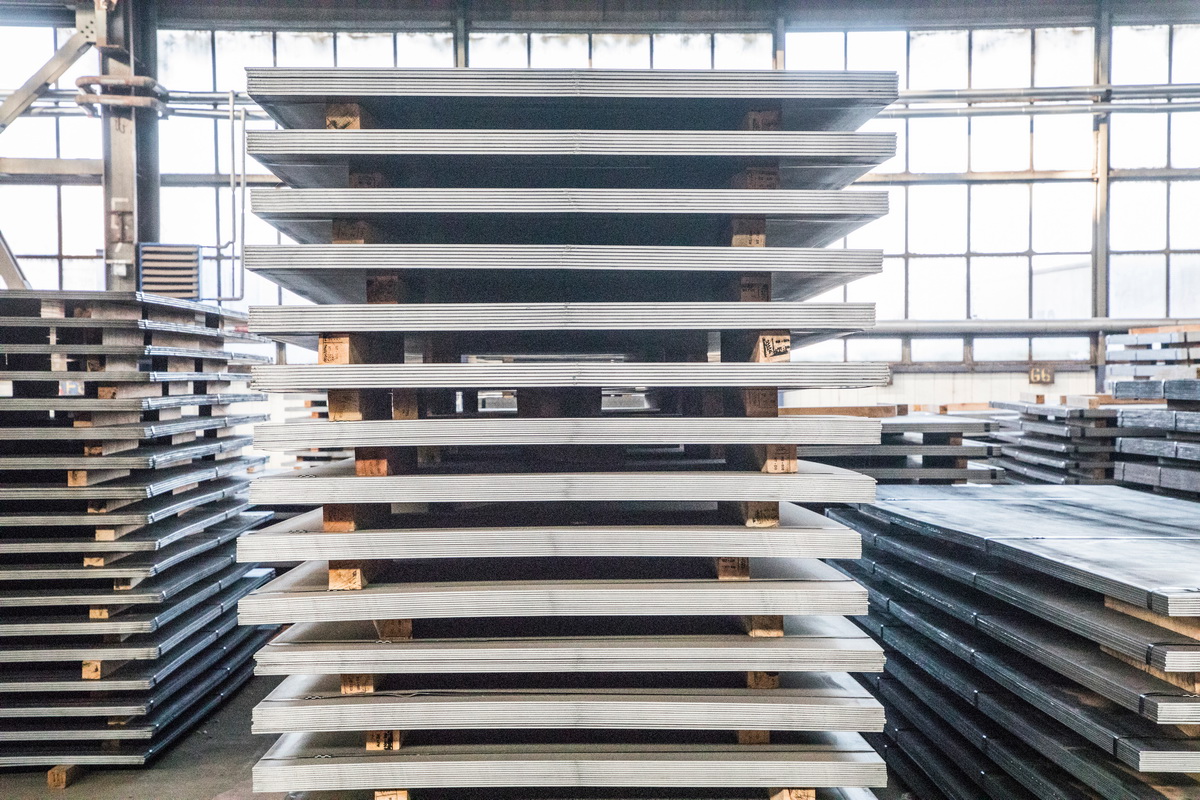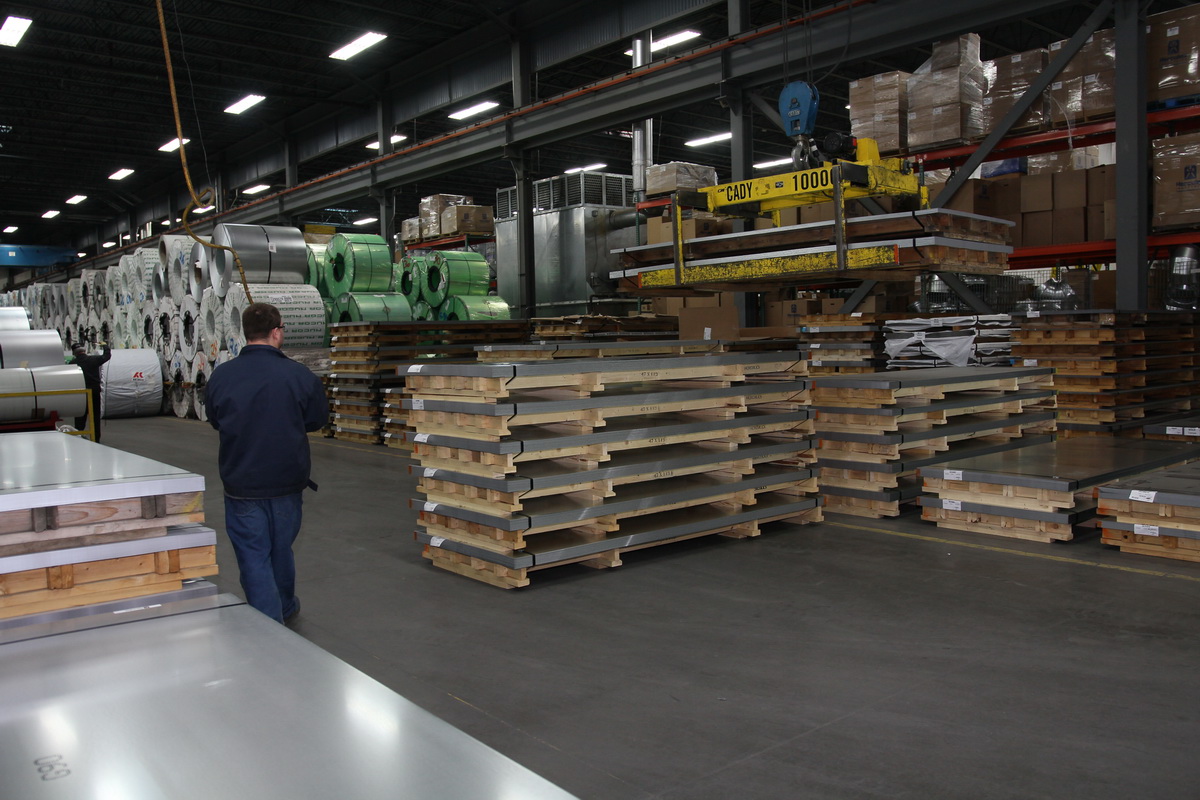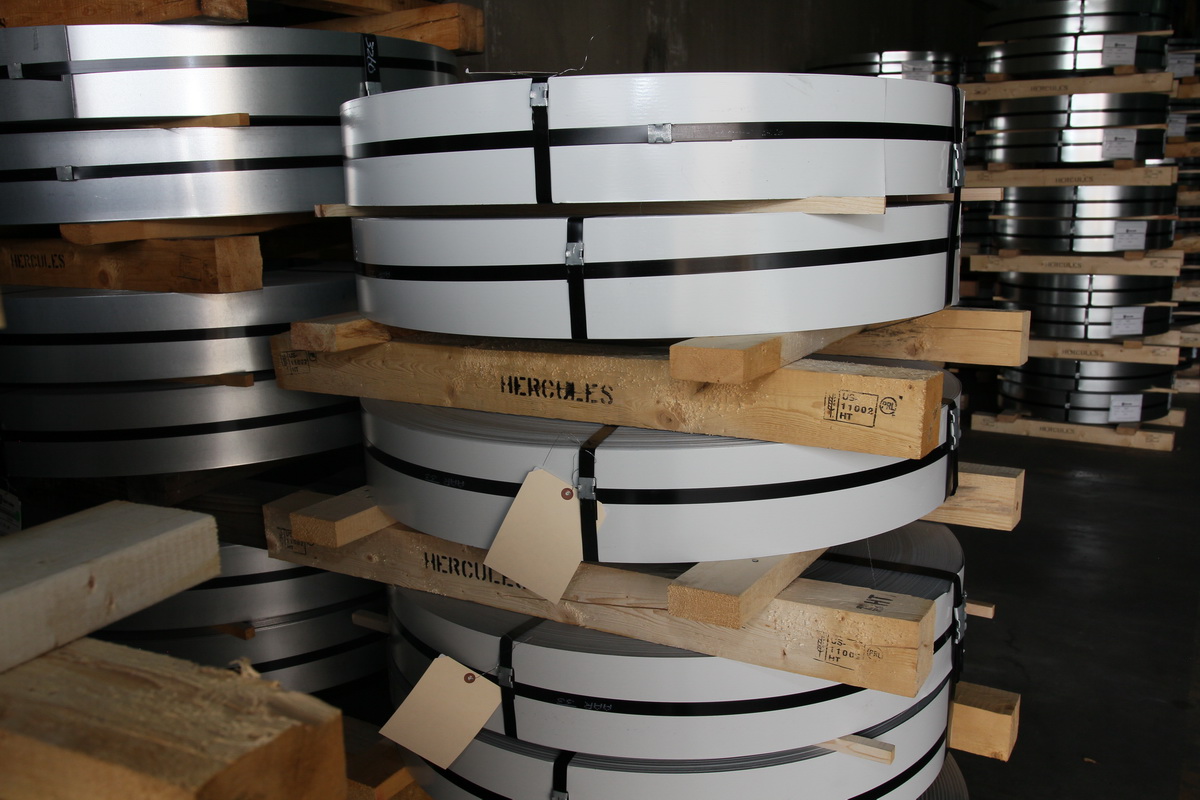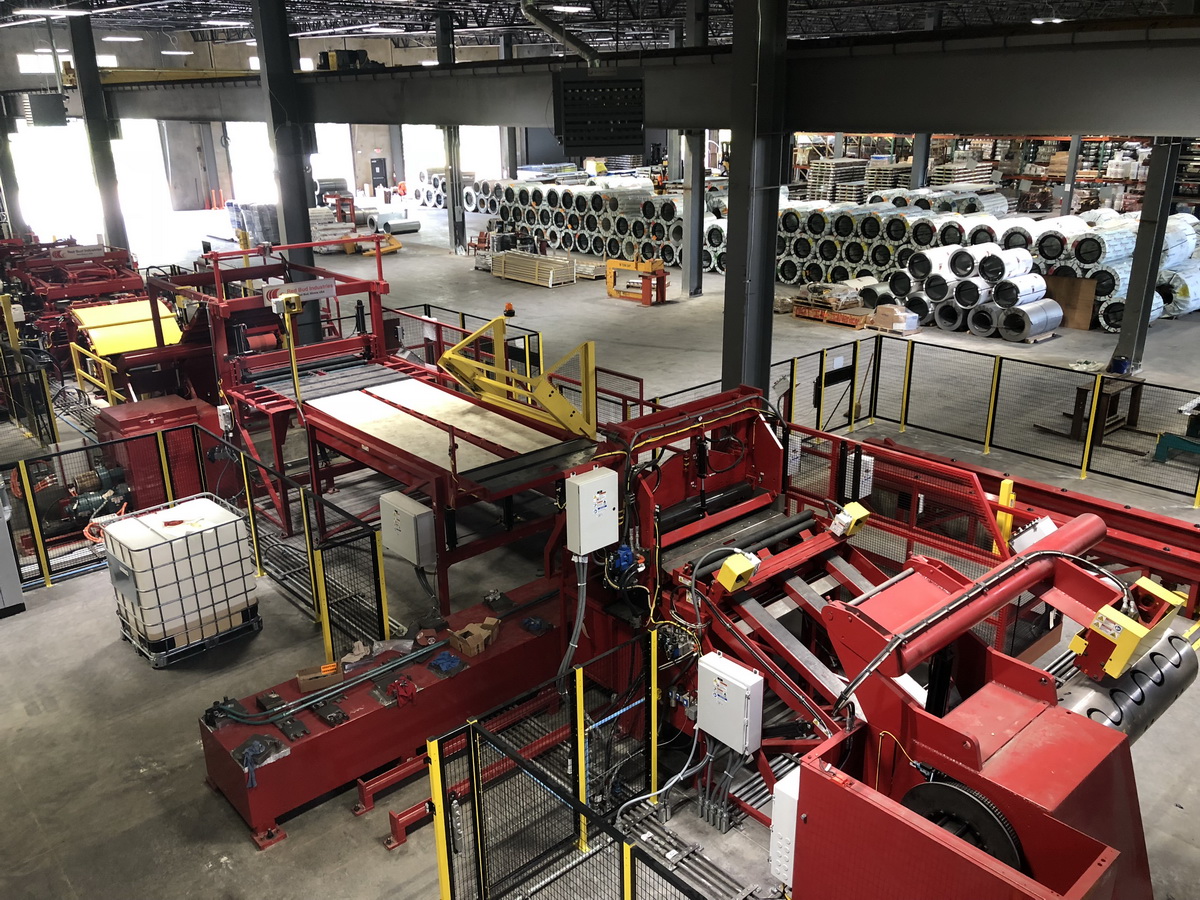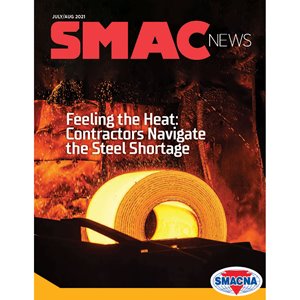HVAC and Sheet Metal Companies Navigate Steel Shortage
For nearly two years, the Covid-19 pandemic has triggered shortages of consumer goods in unexpected places. There were runs on cleaning products and toilet paper in the early days. Sporting goods stores have seen their selection of bicycles and
In the construction industry, companies have found themselves trying to work around disruptions in the steel market. Shortages led to a runup in price in the last year that has been nothing short of breathtaking. According to the Producer Price Index maintained by the U.S. Bureau of Labor Statistics, the price of steel climbed 145% from the early days of the pandemic in June 2020 through June 2021.
“The pricing has gone up to a level that no one’s ever seen before,” says Kevin Ginley, vice president of the commercial division of Cleveland-based Majestic Steel, a distributor and processor of prime carbon flat-rolled steel.
Amid supply constraints, the volatility in the steel market is presenting managerial challenges for sheet metal and HVAC companies scrambling to keep up with demand for products.
Playing catchup
You can trace the current dislocations in the steel supply chain to a constellation of cascading factors. Issues started to emerge in the middle of 2020, according to Brian Loftus, a market research and benchmarking analyst with Heating, Air-conditioning & Refrigeration Distributors International (HARDI).
“After the economic coma in the spring of 2020, the economy bounced back stronger than expected,” Loftus says.
“If you look at the Federal Reserve’s Beige Book from July, Cleveland, Chicago and Minneapolis mention projects postponed or delayed due to the high cost of steel and concrete and labor shortages.” Ginley notes that steel mills initially slashed their production capacity in response to the pandemic. However, the quicker-than-expected recovery in the broad economy meant demand for steel also ramped back up faster than anticipated. Mills have essentially been playing catchup ever since.
As a result, steel-reliant industries are dealing with a double whammy to their supply chains. First, the lead times to fill orders for steel lengthened. “Ask any distributor and they will tell you that lead times are much longer now,” Loftus says.
“That just puts more pressure on the inventories you’ve got on your floor to be able to supply customers,” says Don Modesitt, steel products manager at Denver-based Hercules Industries Inc. “What existing inventories were on service centers' floors had to stretch just to be able to at least try to keep things level.”
Will Goff, director of steel and commodities at Atlanta-based Conklin Metal Industries, says traditional lead times for filling steel orders range from five to six weeks, but they are sitting at 13 weeks right now. Conklin purchases roughly 40,000 tons of steel each year, and Goff estimates the company has seen prices triple during the pandemic.
Additionally, steel mills have instituted allocation policies that limit the volume of steel available to their customers for purchase. For the most part, they aren’t selling amounts beyond their contractual minimums. Opportunities to make spot purchases are few and far between, too.
“Domestic spot buys right now are completely up to the mills in terms of discretion, and most of them are not giving anything to anyone that has not bought from them in the past,” Modesitt says.
Supply constraints
Consequently, the major issue isn’t the price of steel so much as the supply of it. The shortage has forced the steel distributors that directly purchase steel from the mills to impose their own allocation restrictions on orders from their customers.
“It’s almost to the point that we can give our customers what they need, but we can’t give them all the steel they want,” Ginley says.
Interestingly, the market isn’t showing signs that disruptions in the steel supply chain are hurting sheet metal and HVAC companies so far. For example, data from HARDI show average sales performance by HARDI distributors increased 22.1% percent during June 2021. For the 12 months ending in June, average annual sales growth hit 17.2%.
“Demand is off the charts – no question about it,” Modesitt says.
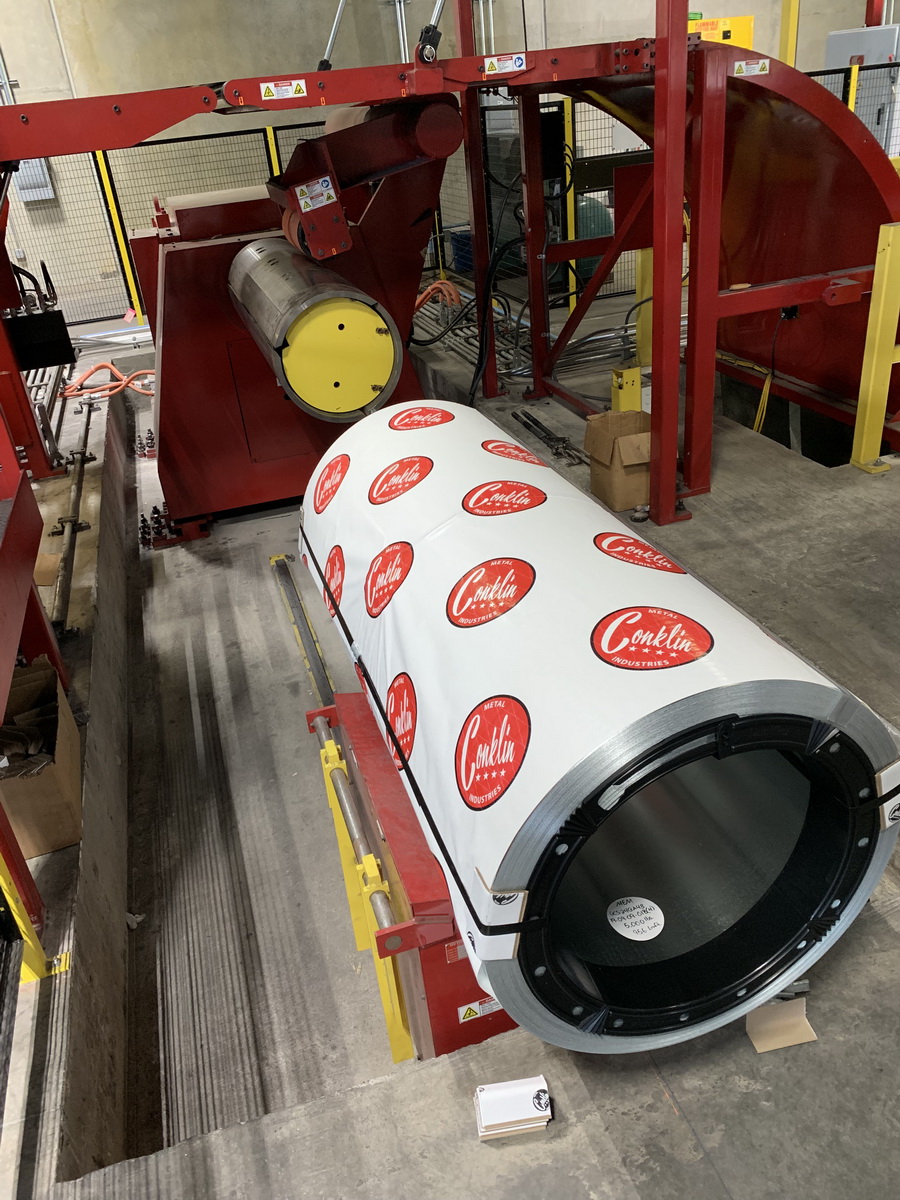
This recoiler takes a 50,000 lb coil and processes it into several small coils; 3,000 lbs minimum and 12,000 lbs maximum.
“We’re just trying to stay current with the market and following the mills’ lead of increasing selling prices in small increments. If we didn’t, we’d be completely out of steel,” Goff says.
At present, the biggest challenges for steel distributors seem to come from managing their own supplies. For instance, Goff says Conklin is prioritizing filling orders from its most consistent customers.
“We’re trying to protect our inventory so that we have steel for our customers when they need it the most,” he said. “In other words, we don’t want to have to tell 10 customers that we don’t have steel for them because we sold it all to one contractor.”
Majestic is taking a similar approach, according to Ginley. “We’re not shorting anybody that wasn’t buying anything before,” he says. “The tricky part is how do you help people grow their business when they don’t have all the extra tons (of steel) that they normally have?”
Some companies also have the option of leaning more heavily on foreign steel markets for specialty products. Hercules Industries, for example, has increased its purchases of foreign steel from around 3% of its inventories to around 6% this year, according to Modesitt.
Quality partnerships
Of course, there’s a big question percolating across the sector: When – and how – will the steel market stabilize?
Ginley predicts it will be a slow-moving process, but it could ultimately build resiliency in the market. New electric arc furnaces (EAFs) are coming online later this year and into early 2022, he says. In the short run, taking older blast furnaces that are less efficient out of service will be offset by the impact of the new EAFs coming online. In the long run, however, Ginley says the new mills will increase efficiency because they can adjust quickly and easily to meet demand.
In terms of lessons learned from the ongoing steel shortage, buyers emphasize evaluating relationships with steel suppliers. Goff notes mill buyers that didn’t have pre-existing buying programs in place have struggled in 2021 because there was practically zero volume available for spot buying.
Modesitt points out that the process for buying steel will look different going forward, meaning companies will need reliable partners.
“Look at the value that your suppliers bring to you,” Modesitt says. “Are they on time with their deliveries? Have they treated you fairly in the market? Make sure that whomever you line up meets your cultural expectations. It’s really a partnership.”
Published: September 3, 2021
IN THIS ISSUE
ARCHITECTURAL: Architecture Billing Index, A Key Indicator of Construction Spending
The COVID-19 pandemic threw the brakes on the economy in 2020, shuttering businesses around the world and throwing millions of people out of work.
Capitol Hill Update: Main St. Efficiency Act | Davis-Bacon | COVID Reimbursement | School Retrofits
SMACNA joined leading business and efficiency groups in supporting small business efficiency upgrade incentives that will be simplified with the Main Street Efficiency Act of 2021.
Cooking Up Clarity
Bringing guidance to food processing industry projects was goal of new SMACNA guidelines.
From the President: Guiding Resources
First it was the supply chain, then lumber prices, then steel…and now the COVID-19 Delta Variant is set to add a lot of uncertainty into the third and fourth quarters of this year.
How Leaders Can Build Enduring Resilience
We’ve all heard the phrase, “It’s a marathon, not a sprint.”
HVAC and Sheet Metal Companies Navigate Steel Shortage
For nearly two years, the Covid-19 pandemic has triggered shortages of consumer goods in unexpected places. There were runs on cleaning products and toilet paper in the early days. Sporting goods stores have seen their selection of bicycles and
HVAC: Top Southeast Pediatric Healthcare System Taps Three SMACNA Members for New Campus
The Southeast’s top pediatric hospital system, Children’s Health of Atlanta (CHOA), will soon have a new hospital campus that provides advanced care for kids.
INDUSTRIAL: Industrial Safety: TAB Contractor Recognized
Beginning work at a nuclear power plant last year — the first new reactor construction in the United States since the Three Mile Island accident in 1979 — SMACNA contractor Research Air Flo expected heightened safety requirements.
RESIDENTIAL: Google Ads are a Great Way for Contractors to Gain New Business
For many contractors, Google Ads is a complex landscape, but with a couple of tips and tricks to simplify the process, Google Ads can be a very effective tool to gain new customers in new ways.
The 6 Most Common Mistakes Estimating Teams Make — and How to Overcome Them
The estimation process is critical to the success of any given project, but it’s also a leading indicator of the overall health of your construction business in the long term.
Upgrading Your Pre-Qualification Process to Today’s Market Demands
The purpose of a prequalification process is to evaluate whether a contractor is qualified to bid on a specific construction project.
Welcome New SMACNA Members

